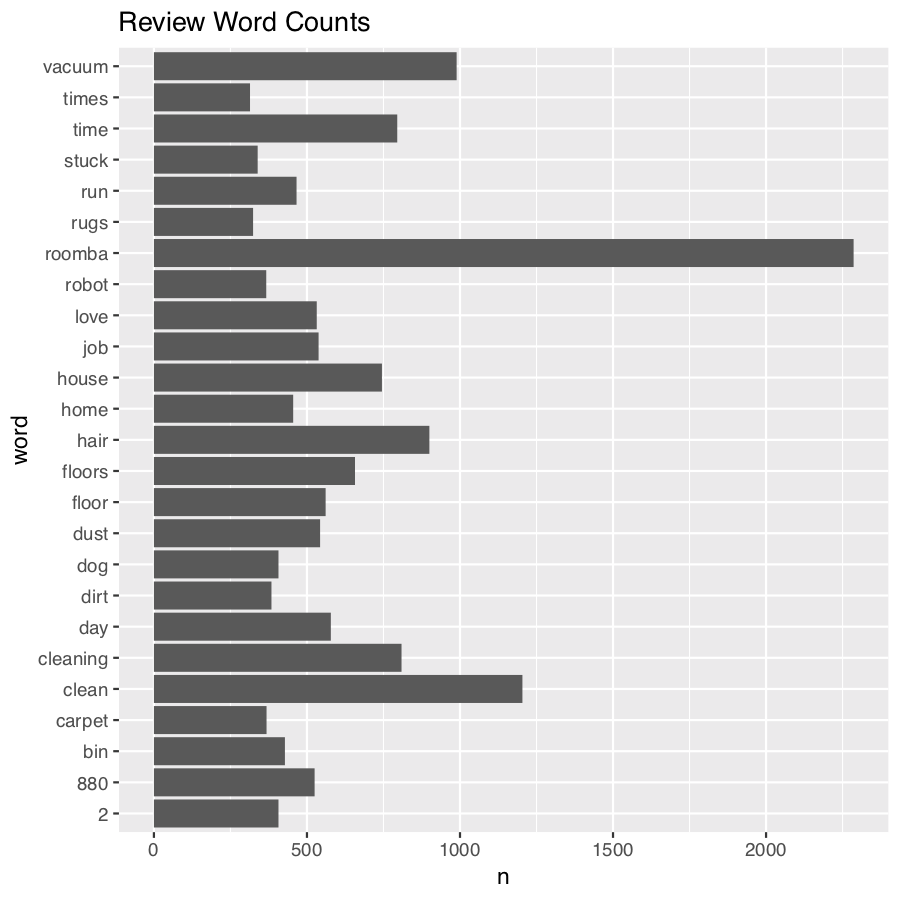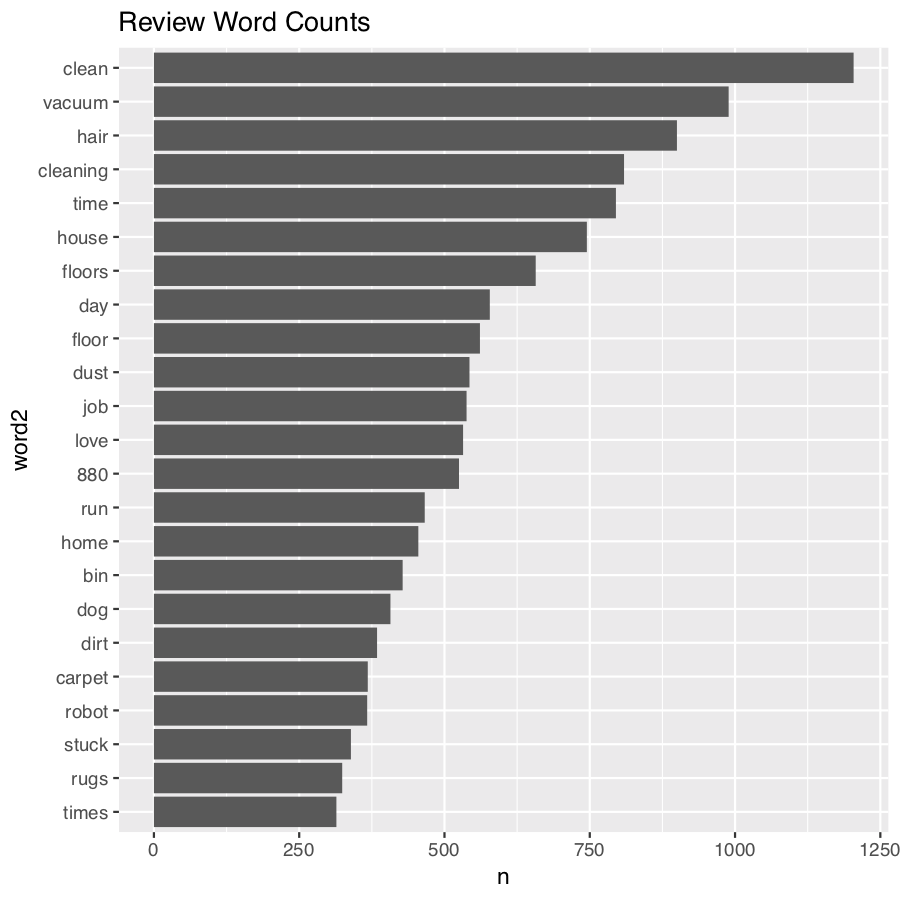Improving word count plots
Introduction to Text Analysis in R

Maham Faisal Khan
Senior Data Science Content Developer
Custom stop words
stop_words
# A tibble: 1,149 x 2
word lexicon
<chr> <chr>
1 a SMART
2 a's SMART
3 able SMART
4 about SMART
5 above SMART
# … with 1,144 more rows
Using tribble()
tribble(
~word, ~lexicon,
"roomba", "CUSTOM",
"2", "CUSTOM"
)
# A tibble: 2 x 2
word lexicon
<chr> <chr>
1 roomba CUSTOM
2 2 CUSTOM
Using bind_rows()
custom_stop_words <- tribble( ~word, ~lexicon, "roomba", "CUSTOM", "2", "CUSTOM" )stop_words2 <- stop_words %>% bind_rows(custom_stop_words)
Removing stop words again
tidy_review <- review_data %>% mutate(id = row_number()) %>% select(id, date, product, stars, review) %>% unnest_tokens(word, review) %>% anti_join(stop_words2)tidy_review %>% filter(word == "roomba")
# A tibble: 0 x 5
# … with 5 variables: id <int>, date <chr>, product <chr>, stars <dbl>, word <chr>
Factors

Using fct_reorder()
word_counts <- tidy_review %>%
count(word) %>%
filter(n > 300) %>%
mutate(word2 = fct_reorder(word, n))
Using fct_reorder()
word_counts
# A tibble: 23 x 3
word n word2
<chr> <int> <fct>
1 880 525 880
2 bin 428 bin
# … with 21 more rows
Arranging the bar plot
ggplot(
word_counts, aes(x = word2, y = n)
) +
geom_col() +
coord_flip() +
ggtitle("Review Word Counts")

Let's practice!
Introduction to Text Analysis in R

